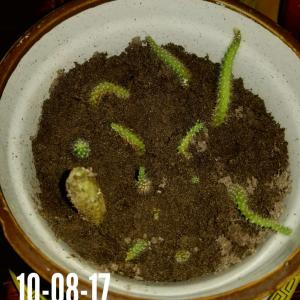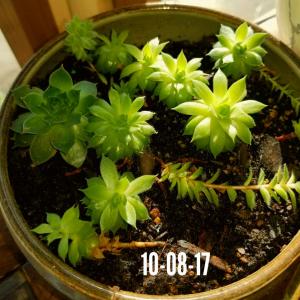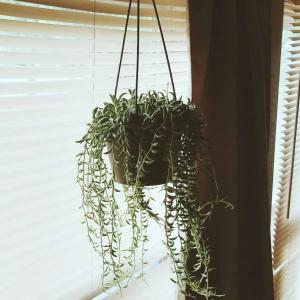文章
Dummer. ゛☀
2017年10月08日

Theese tough, dependable, long-lived perenniaal make an impressive statement in the garden, growing as much as 3 to 4 feet tall. The most common species found in gardens baptisia, also known as blue wild indigo, has spires of blue flowers in late spring and early summer and was used by early American colonists as a dye plant. But other species and hybrids bloom in a wide variety of colors.
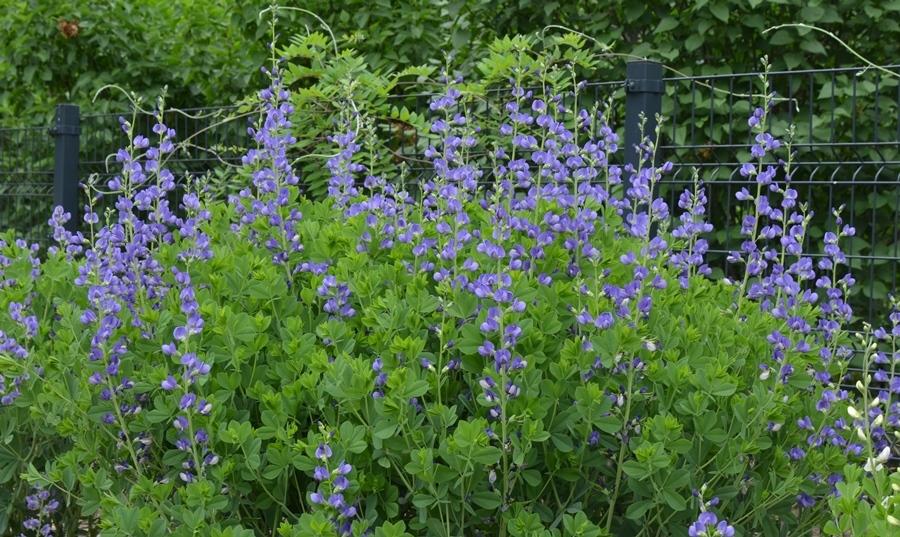
About baptisias
Baptisias are native to the central and southeastern U.S. In spring and early summer, their clover-like foliage is topped by spires of pea-like blooms. Baptisias grow slowly at first, but after a few years forms an attractive, upright mound up to 4 feet across. A mass planting of baptisia in full bloom is a striking sight. Both the flowers and the seed pods are attractive in bouquets. Hardiness varies with species, but most grow well in Zones 5-8.
Choosing a site to grow baptisias
Baptisias do best in full sun and well-drained soil of average fertility. If planted in part shade they may need staking to prevent sprawling. Once established, they are reasonably drought tolerant.

Planting Instructions
Container plants can be set out any time during the growing season. Space most plants at least 3 feet apart. Mature plants can be 4 feet wide and resent disturbance, so give young plants plenty of space to grow into. Prepare the garden bed by using a garden fork or tiller to loosen the soil to a depth of 12 to 15 inches, then mix in a 2- to 4-inch layer of compost. Dig a hole twice the diameter of the pot the plant is in. Carefully remove the plant from its container and place it in the hole so the top of the root ball is level with the soil surface. Carefully fill in around the root ball and firm the soil gently. Water thoroughly.
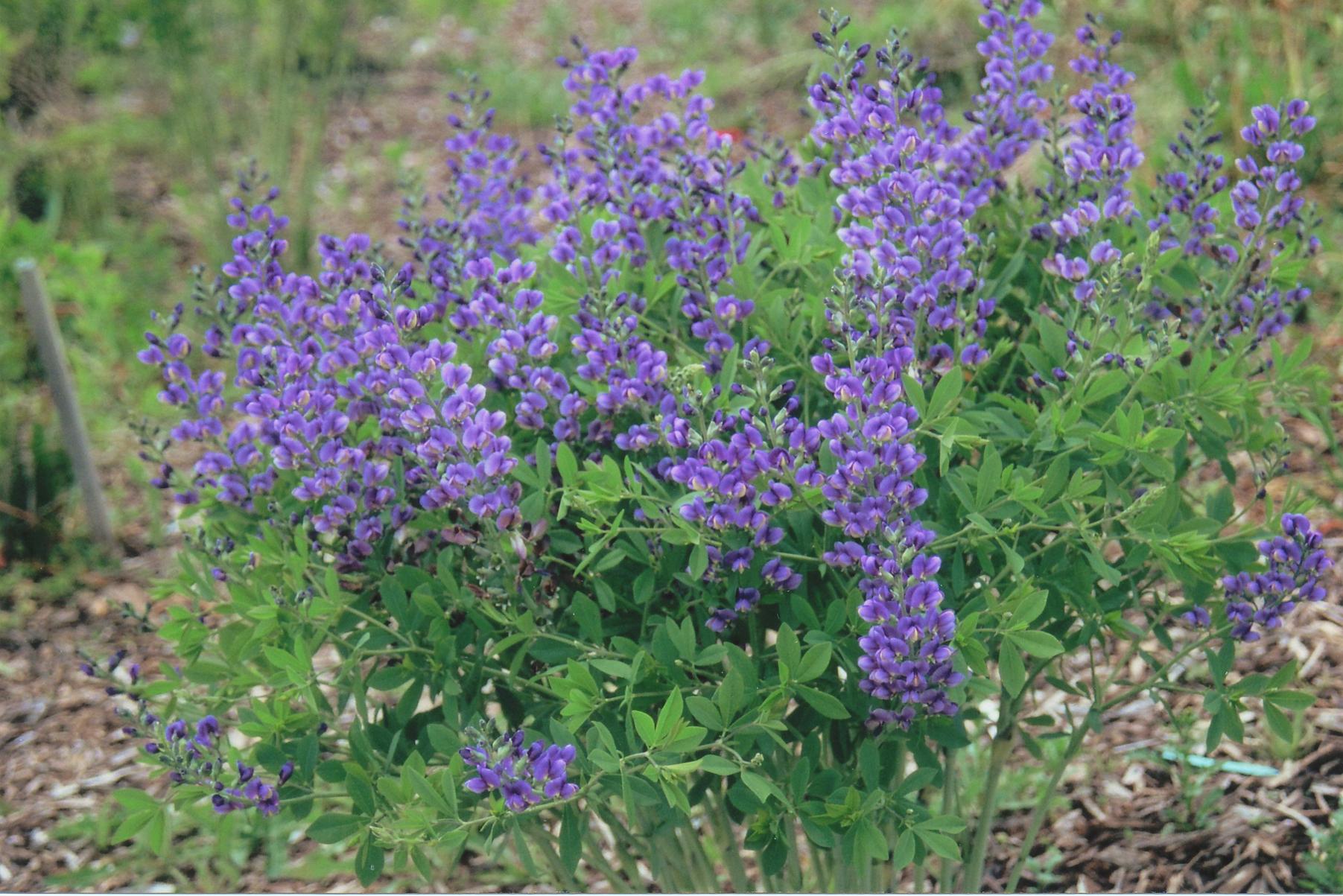
Ongoing Care
Baptisia forms a deep taproot, making it difficult to transplant, so choose the planting site carefully. Unlike many other perennials, baptisia clumps don't need dividing. Although it's possible to divide the deep, gnarly root mass, it's risky and you may end up damaging the plant so much that it can't recover. If you want more plants you can propagate them by seed or cuttings. Baptisias have few insect and disease problems and are usually ignored by deer.

About baptisias
Baptisias are native to the central and southeastern U.S. In spring and early summer, their clover-like foliage is topped by spires of pea-like blooms. Baptisias grow slowly at first, but after a few years forms an attractive, upright mound up to 4 feet across. A mass planting of baptisia in full bloom is a striking sight. Both the flowers and the seed pods are attractive in bouquets. Hardiness varies with species, but most grow well in Zones 5-8.
Choosing a site to grow baptisias
Baptisias do best in full sun and well-drained soil of average fertility. If planted in part shade they may need staking to prevent sprawling. Once established, they are reasonably drought tolerant.

Planting Instructions
Container plants can be set out any time during the growing season. Space most plants at least 3 feet apart. Mature plants can be 4 feet wide and resent disturbance, so give young plants plenty of space to grow into. Prepare the garden bed by using a garden fork or tiller to loosen the soil to a depth of 12 to 15 inches, then mix in a 2- to 4-inch layer of compost. Dig a hole twice the diameter of the pot the plant is in. Carefully remove the plant from its container and place it in the hole so the top of the root ball is level with the soil surface. Carefully fill in around the root ball and firm the soil gently. Water thoroughly.

Ongoing Care
Baptisia forms a deep taproot, making it difficult to transplant, so choose the planting site carefully. Unlike many other perennials, baptisia clumps don't need dividing. Although it's possible to divide the deep, gnarly root mass, it's risky and you may end up damaging the plant so much that it can't recover. If you want more plants you can propagate them by seed or cuttings. Baptisias have few insect and disease problems and are usually ignored by deer.
1
1
文章
Dummer. ゛☀
2017年10月08日

With a light and elegant appearance, baby's breath
is a beautiful bedding plant that can fill your
garden area with tiny clouds of white showy flowers.

About baby's breaths
Most popularly used as a cutting plant, baby's breath is a dense flowering border and bedding plant covered with tiny, loosely-scattered, white flowers. You can purchase both annual or perennial varieties. Perennial baby's breath will bloom for a long period during the mid-summer season. The annual plant will bloom for the summer, then die-off, whereas perennial varieties continue to bloom year after year.

Choosing a site to grow baby's breaths
Baby's breath is best grown in full sun, although it will get by with as little as 4 hours of direct sun. In full sun, baby's breath is easy to grow and is drought tolerant as well. It prefers rich, well drained or sandy soil conditions.
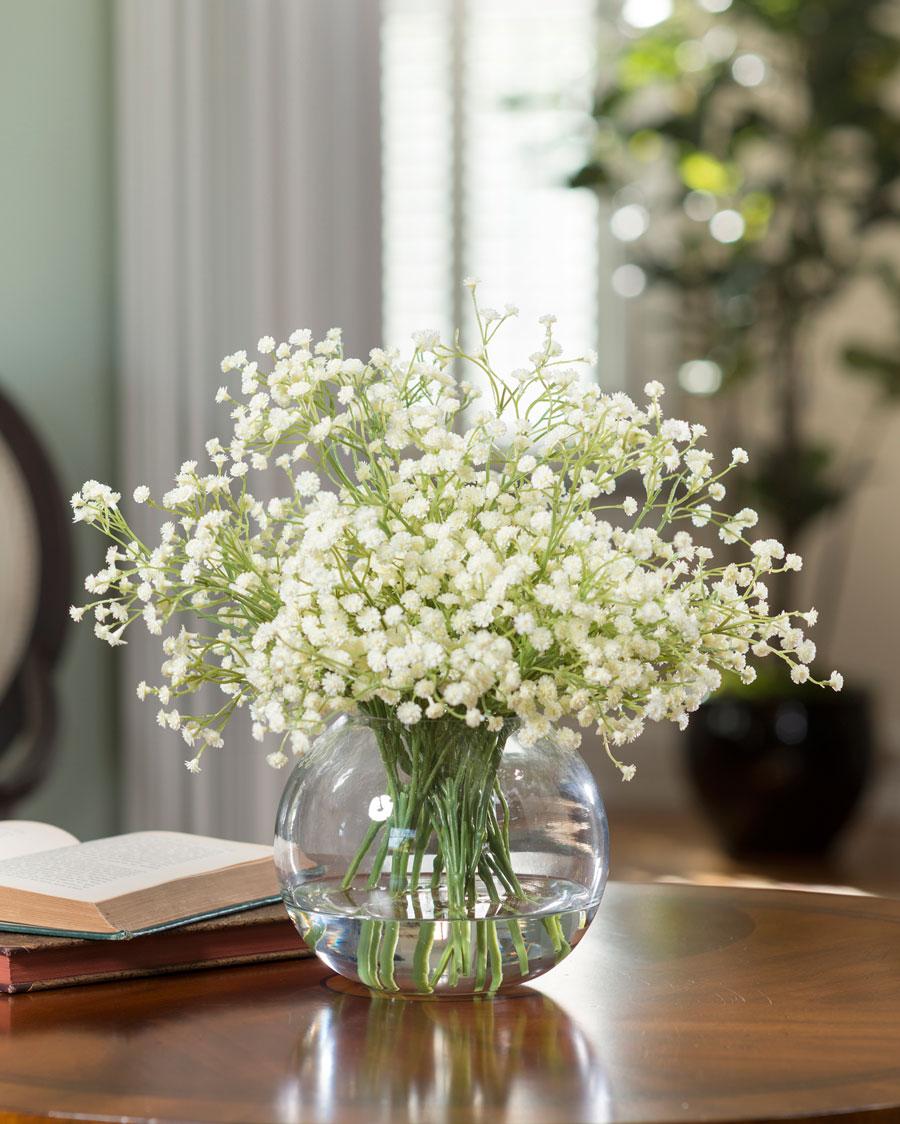
Planting Instructions
Plant baby's breath in early spring. Plant at the same depth that the plant was growing in its container. Because baby's breath is susceptible to stem rot, be sure to grade the soil away from the plant to help prevent water collecting and damaging the plants.
Ongoing Care
Staking will help support the plant, but because the plant is so brittle, be sure to stake baby's breath plants well before the summer blooms appear to avoid damaging the plant. In cooler climates, mulch your perennial baby's breath in the fall to help protect the plant during the winter period.
is a beautiful bedding plant that can fill your
garden area with tiny clouds of white showy flowers.

About baby's breaths
Most popularly used as a cutting plant, baby's breath is a dense flowering border and bedding plant covered with tiny, loosely-scattered, white flowers. You can purchase both annual or perennial varieties. Perennial baby's breath will bloom for a long period during the mid-summer season. The annual plant will bloom for the summer, then die-off, whereas perennial varieties continue to bloom year after year.

Choosing a site to grow baby's breaths
Baby's breath is best grown in full sun, although it will get by with as little as 4 hours of direct sun. In full sun, baby's breath is easy to grow and is drought tolerant as well. It prefers rich, well drained or sandy soil conditions.

Planting Instructions
Plant baby's breath in early spring. Plant at the same depth that the plant was growing in its container. Because baby's breath is susceptible to stem rot, be sure to grade the soil away from the plant to help prevent water collecting and damaging the plants.
Ongoing Care
Staking will help support the plant, but because the plant is so brittle, be sure to stake baby's breath plants well before the summer blooms appear to avoid damaging the plant. In cooler climates, mulch your perennial baby's breath in the fall to help protect the plant during the winter period.
5
3
文章
Dummer. ゛☀
2017年10月08日

The brilliant flowers of asters brighten the fall garden when little else is blooming. Indeed, "aster," the Latin word for "star," aptly describes the starry flower heads.

About asters
Aster thrives under a wide range of conditions. Plant height ranges from 8 inches to 8 feet, depending on variety. Tall varieties make good back-of-the-border plants and are also attractive planted in naturalized meadows.

Special features of asters
Attracts butterflies.
Choosing a site to grow asters
Dependent on species. Some prefer full sun, others require shade. Some types of asters grow in wetlands, others are suitable for xeriscaping.
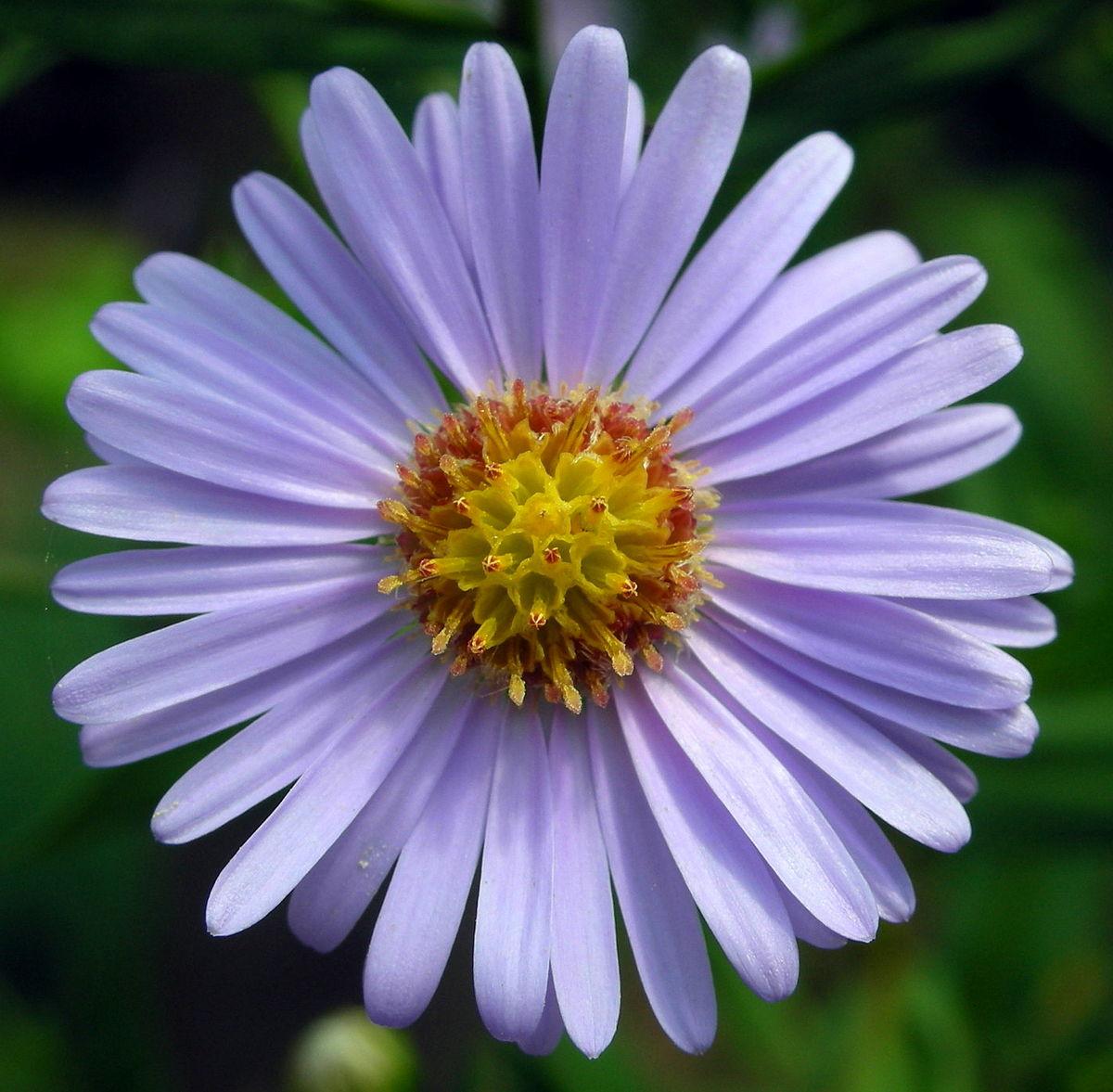
Planting Instructions
Plant in spring, spacing plants 1 to 3 feet apart, depending on the variety. Prepare garden bed by using a garden fork or tiller to loosen the soil to a depth of 12 to 15 inches, then mix in a 2- to 4-inch layer of compost. Dig a hole twice the diameter of the pot the plant is in. Carefully remove the plant from its container and place it in the hole so the top of the root ball is level with the soil surface. Carefully fill in around the root ball and firm the soil gently. Water thoroughly.

Ongoing Care
Highly variable, but most asters are carefree.

About asters
Aster thrives under a wide range of conditions. Plant height ranges from 8 inches to 8 feet, depending on variety. Tall varieties make good back-of-the-border plants and are also attractive planted in naturalized meadows.

Special features of asters
Attracts butterflies.
Choosing a site to grow asters
Dependent on species. Some prefer full sun, others require shade. Some types of asters grow in wetlands, others are suitable for xeriscaping.

Planting Instructions
Plant in spring, spacing plants 1 to 3 feet apart, depending on the variety. Prepare garden bed by using a garden fork or tiller to loosen the soil to a depth of 12 to 15 inches, then mix in a 2- to 4-inch layer of compost. Dig a hole twice the diameter of the pot the plant is in. Carefully remove the plant from its container and place it in the hole so the top of the root ball is level with the soil surface. Carefully fill in around the root ball and firm the soil gently. Water thoroughly.

Ongoing Care
Highly variable, but most asters are carefree.
0
0
文章
Dummer. ゛☀
2017年10月08日

Anemones, also known as windflowers, are a diverse group, with various species blooming in spring and fall. Some have fibrous roots and are found in the perennials section of nurseries and garden centers. Others grow from tubers that are sold and planted in the fall along with spring-flowering bulbs like tulips.
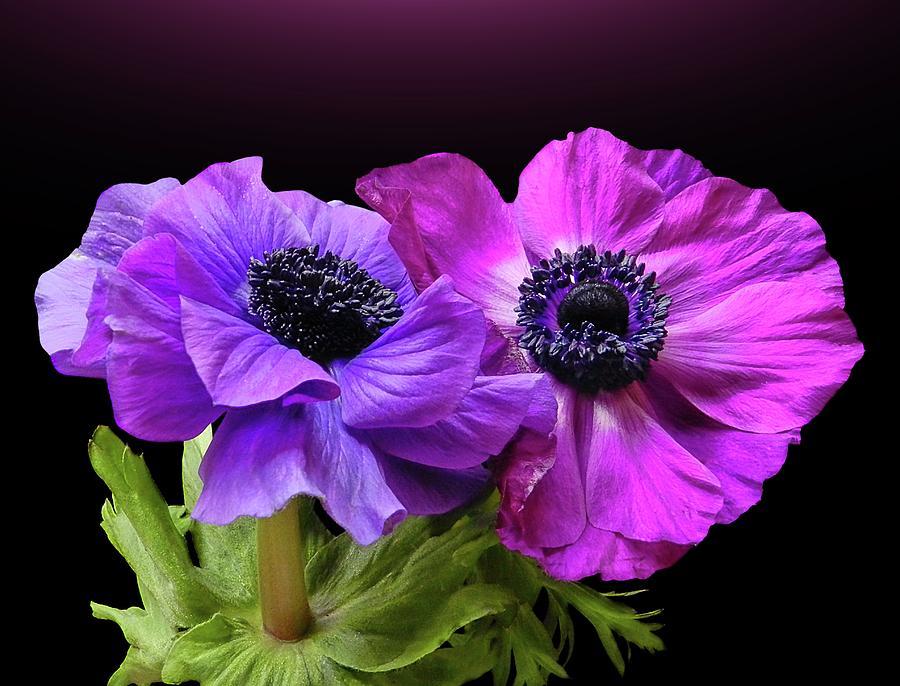
About anemones
Spring blooming anemones are low growing plants that are good choices for woodland and rock gardens. While most of them grow from creeping rhizomes, Grecian windflower (Anemone blanda) and poppy anemone (A. coronaria) grow from tubers. Plant these early bloomers in the fall; Grecian windflowers are hardy in zones 4-7, while poppy anemones thrive in zones 6-9 and are also popular for forcing.
Tall growing fall anemones add color to borders and woodland gardens from late summer to late fall in shades of pink and white. These Asian natives bear large, cup-shaped blossoms on graceful stems that sway above clumps of dark green, maple-like leaves.
All anemones are poisonous if ingested.

Special features of anemones
Wood anemone (Anemone nemorosa) This species will often naturalize in the shade of deciduous trees, where its deep green leaves provide a backdrop to its pure white, single, star-shaped flowers in early spring. Pink and blue cultivars are also available. Growing 6-8 inches tall, it prefers rich, moist but well-drained, acid soil; roots will rot if the soil is too soggy. Wood anemone goes dormant in early summer as the trees leaf out. Sometimes it's offered in the fall as a dormant rhizome. Hardy in zones 3-9.
Snowdrop anemone (Anemone sylvestris) Another spring bloomer that naturalizes well, this species has fragrant, single, slightly nodding, 1-2 inch wide flowers on 12-18 inch plants. It prefers the same growing conditions as the wood anemone. Hardy in zones 4-9.
Grapeleaf Anemone (Anemone tomentosa 'Robustissima') Growing about 3 feet tall, this anemone will spread but is not invasive. The hardiest of the fall bloomers, it will grow in zones 3-9. The flowers are silvery pink and come into bloom in early fall, carrying on for several weeks.
Hybrid or Japanese anemone (Amemone x hybrida) This Asian native bears large, single or double, cup-shaped blossoms whose satiny petals surround a contrasting green and gold central button. Commonly available cultivars include the elegant, single-flowered, white variety 'Honorine Jobert', and semi-double, pink 'Queen Charlotte'. Its flowers are borne on 3-4 foot tall stems in mid fall. Hardy in zones 5-9.
Chinese anemone (Anemone hupehensis) Similar to the hybrid anemones, but more compact, these are 2-3 feet tall in bloom. Popular cultivars include deep rose-pink, semi-double 'Prince Henry' and 'September Charm' with single, rose-pink flowers in late summer to early fall. Hardy in zones 4-9.
Choosing a site to grow anemones
Spring blooming anemones do best in part shade. Fall bloomers thrive in full sun to part shade. All appreciate soil that is moist, but well-drained- never soggy and on the acid side.

Planting Instructions
Container grown plants can be set out throughout the growing season, but spring is preferred for fall bloomers. Divide the spring bloomers in midsummer or early fall. Space wood anemones 10 inches apart, snowdrop anemones 12-24 inches apart and fall bloomers 18 inches apart. Prepare the garden bed by using a garden fork or tiller to loosen the soil to a depth of 12 to 15 inches, then mix in a 2- to 4-inch layer of compost. Dig a hole twice the diameter of the pot the plant is in. Carefully remove the plant from its container and place it in the hole so the top of the root ball is level with the soil surface. Carefully fill in around the root ball and firm the soil gently. Water thoroughly.
Ongoing Care
Divide or move plants in the garden only in the spring. Fall anemones may be slow to establish, but once they are settled in they have a tendency to spread, as do the spring bloomers. Deadheading won't prolong bloom, but will make plants look neater.

About anemones
Spring blooming anemones are low growing plants that are good choices for woodland and rock gardens. While most of them grow from creeping rhizomes, Grecian windflower (Anemone blanda) and poppy anemone (A. coronaria) grow from tubers. Plant these early bloomers in the fall; Grecian windflowers are hardy in zones 4-7, while poppy anemones thrive in zones 6-9 and are also popular for forcing.
Tall growing fall anemones add color to borders and woodland gardens from late summer to late fall in shades of pink and white. These Asian natives bear large, cup-shaped blossoms on graceful stems that sway above clumps of dark green, maple-like leaves.
All anemones are poisonous if ingested.

Special features of anemones
Wood anemone (Anemone nemorosa) This species will often naturalize in the shade of deciduous trees, where its deep green leaves provide a backdrop to its pure white, single, star-shaped flowers in early spring. Pink and blue cultivars are also available. Growing 6-8 inches tall, it prefers rich, moist but well-drained, acid soil; roots will rot if the soil is too soggy. Wood anemone goes dormant in early summer as the trees leaf out. Sometimes it's offered in the fall as a dormant rhizome. Hardy in zones 3-9.
Snowdrop anemone (Anemone sylvestris) Another spring bloomer that naturalizes well, this species has fragrant, single, slightly nodding, 1-2 inch wide flowers on 12-18 inch plants. It prefers the same growing conditions as the wood anemone. Hardy in zones 4-9.
Grapeleaf Anemone (Anemone tomentosa 'Robustissima') Growing about 3 feet tall, this anemone will spread but is not invasive. The hardiest of the fall bloomers, it will grow in zones 3-9. The flowers are silvery pink and come into bloom in early fall, carrying on for several weeks.
Hybrid or Japanese anemone (Amemone x hybrida) This Asian native bears large, single or double, cup-shaped blossoms whose satiny petals surround a contrasting green and gold central button. Commonly available cultivars include the elegant, single-flowered, white variety 'Honorine Jobert', and semi-double, pink 'Queen Charlotte'. Its flowers are borne on 3-4 foot tall stems in mid fall. Hardy in zones 5-9.
Chinese anemone (Anemone hupehensis) Similar to the hybrid anemones, but more compact, these are 2-3 feet tall in bloom. Popular cultivars include deep rose-pink, semi-double 'Prince Henry' and 'September Charm' with single, rose-pink flowers in late summer to early fall. Hardy in zones 4-9.
Choosing a site to grow anemones
Spring blooming anemones do best in part shade. Fall bloomers thrive in full sun to part shade. All appreciate soil that is moist, but well-drained- never soggy and on the acid side.

Planting Instructions
Container grown plants can be set out throughout the growing season, but spring is preferred for fall bloomers. Divide the spring bloomers in midsummer or early fall. Space wood anemones 10 inches apart, snowdrop anemones 12-24 inches apart and fall bloomers 18 inches apart. Prepare the garden bed by using a garden fork or tiller to loosen the soil to a depth of 12 to 15 inches, then mix in a 2- to 4-inch layer of compost. Dig a hole twice the diameter of the pot the plant is in. Carefully remove the plant from its container and place it in the hole so the top of the root ball is level with the soil surface. Carefully fill in around the root ball and firm the soil gently. Water thoroughly.
Ongoing Care
Divide or move plants in the garden only in the spring. Fall anemones may be slow to establish, but once they are settled in they have a tendency to spread, as do the spring bloomers. Deadheading won't prolong bloom, but will make plants look neater.
1
0



